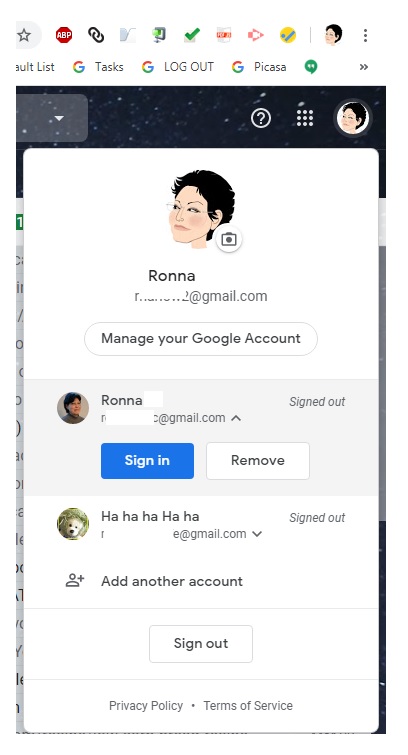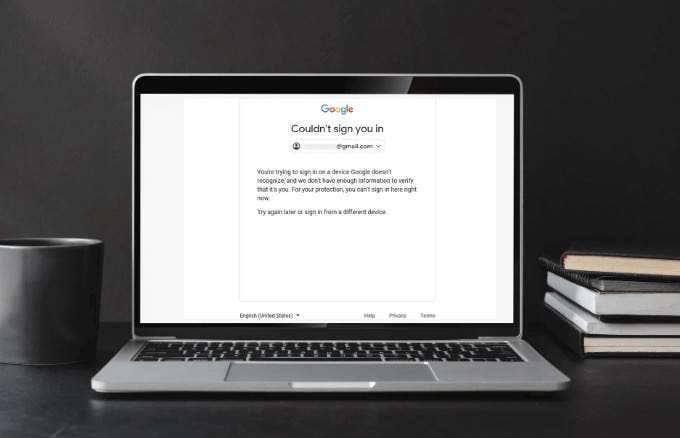
- #FREQUENT LOG OUT FOR GOOGLE ACCOUNT IN MAC MANUAL#
- #FREQUENT LOG OUT FOR GOOGLE ACCOUNT IN MAC VERIFICATION#
- #FREQUENT LOG OUT FOR GOOGLE ACCOUNT IN MAC CODE#
I’ve written about how you can turn on Incognito mode in Chrome and Opera, p rivate browsing in Firefox and private browsing in IE 11 or Edge. The next best option is to use one of the private browsing modes that all browsers now have. However, even if you don’t sign into Chrome, you still won’t be automatically logged out of your Google account. If you sign in using your Google account, then your apps, bookmarks, passwords, autofill data, and lots of other information will be synced and saved. The last thing you can do is to make sure you don’t sign into Chrome if you’re using the Chrome browser. So instead of having to type in your password again and again, you just need to enter the code. However, if you’re looking for a way to logout automatically, then you probably are the person that doesn’t mind retyping their credentials.Īlso, if you have your password saved in the browser, it works really well because the password will automatically be filled by your browser, but no one can gain access until you type in the code.
#FREQUENT LOG OUT FOR GOOGLE ACCOUNT IN MAC CODE#
Of course, this requires more setup and you also have a little more hassle of having to type in this code anytime you want to access you account.

#FREQUENT LOG OUT FOR GOOGLE ACCOUNT IN MAC VERIFICATION#
When using two-step verification, if you don’t check the Remember verification for this computer for 30 days option, every time you try to log into your Google account, you will have to type the six digit code. With two factor authentication, you have to type in your password and you have to type in a six digit code generated every 30 seconds by an app on your phone. The only true “automatic” way to logout of your Google account is if you’re using two-factor authentication (called two-step verification by Google).
#FREQUENT LOG OUT FOR GOOGLE ACCOUNT IN MAC MANUAL#
This is still a very manual process, but it’s useful if you logged in somewhere and can’t physically logout from that device. Anyone else will have to sign in again with a password. If you click the Sign out all other sessions button, only you will be able to access your Gmail account again. If you click on that, it will open a new window showing when you account was accessed by type (browser, IMAP, SMTP, etc) and by IP address/location. If you go to Gmail and scroll all the way to the bottom, you will see Last account activity: x minutes ago and a link called Details.
:max_bytes(150000):strip_icc()/007-how-to-sign-out-of-gmail-1172003-3537137963634c90a41f3cfee87c3437.jpg)

You can log into Gmail on another computer and then sign out all other sessions. Luckily, there is one feature in Gmail that helps with this type of problem. Now what? Technically, that person can just go to Gmail and see all your emails. Let’s say you logged into your Gmail account at a friends house and forgot to logout before leaving. In this article, I’ll try to walk through the different things I do in order to make sure my account can’t be accessed by anyone else. Unfortunately, there is no perfect solution to this problem. I’ve seen it happen so many times in hotels and apartment complexes where I go to Gmail in the browser and it loads up someone else’s Gmail account! Lucky for them, I’m not a hacker or an evil person otherwise I could theoretically access lots of sensitive information about that person.


 0 kommentar(er)
0 kommentar(er)
